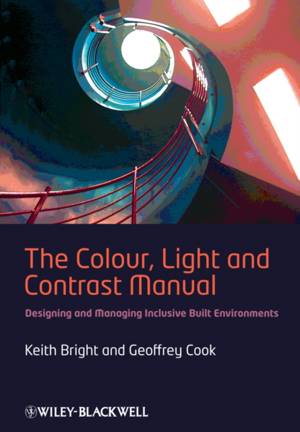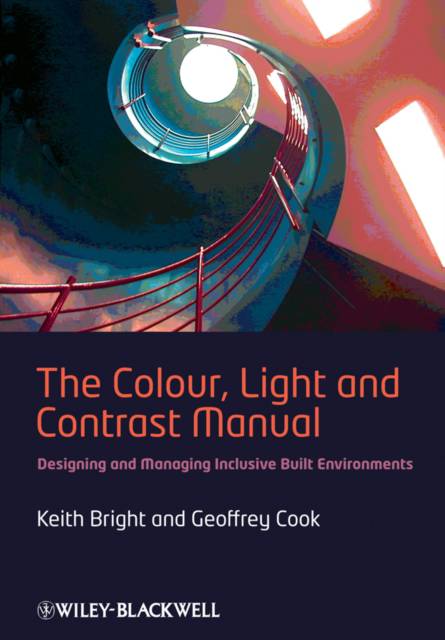
- Retrait gratuit dans votre magasin Club
- 7.000.000 titres dans notre catalogue
- Payer en toute sécurité
- Toujours un magasin près de chez vous
- Retrait gratuit dans votre magasin Club
- 7.000.000 titres dans notre catalogue
- Payer en toute sécurité
- Toujours un magasin près de chez vous
The Colour, Light and Contrast Manual
Designing and Managing Inclusive Built Environments
Keith Bright, Geoffrey CookDescription
The ways colour, light and contrast are used within built environments are critical in determining how people interact with the space, and how confident, safe, and secure they will feel when doing so. They also have a major influence on a person's sense of well-being and their ability to use the environment independently and without undue effort.
Understanding how to use colour and contrast and how they are influenced by both natural and artificial lighting is vital for all those involved in the design and management of the environments and spaces we all use.
In recent years there has been a considerable amount of work undertaken to further our understanding of how colour, light and contrast affect emotion and sensory abilities, and how they can assist or hinder people in their everyday lives.
Other publications consider these issues individually but The Colour, Light and Contrast Manual: designing and managing inclusive built environments draws knowledge and information together to produce a unique, comprehensive and informative guide to how the three elements can work together to improve the design and management of environments for us all.
Supporting website at: www.wiley.com/go/brightandcook
Spécifications
Parties prenantes
- Auteur(s) :
- Editeur:
Contenu
- Nombre de pages :
- 222
- Langue:
- Anglais
Caractéristiques
- EAN:
- 9781405195041
- Date de parution :
- 29-03-10
- Format:
- Livre broché
- Format numérique:
- Trade paperback (VS)
- Dimensions :
- 188 mm x 241 mm
- Poids :
- 576 g







